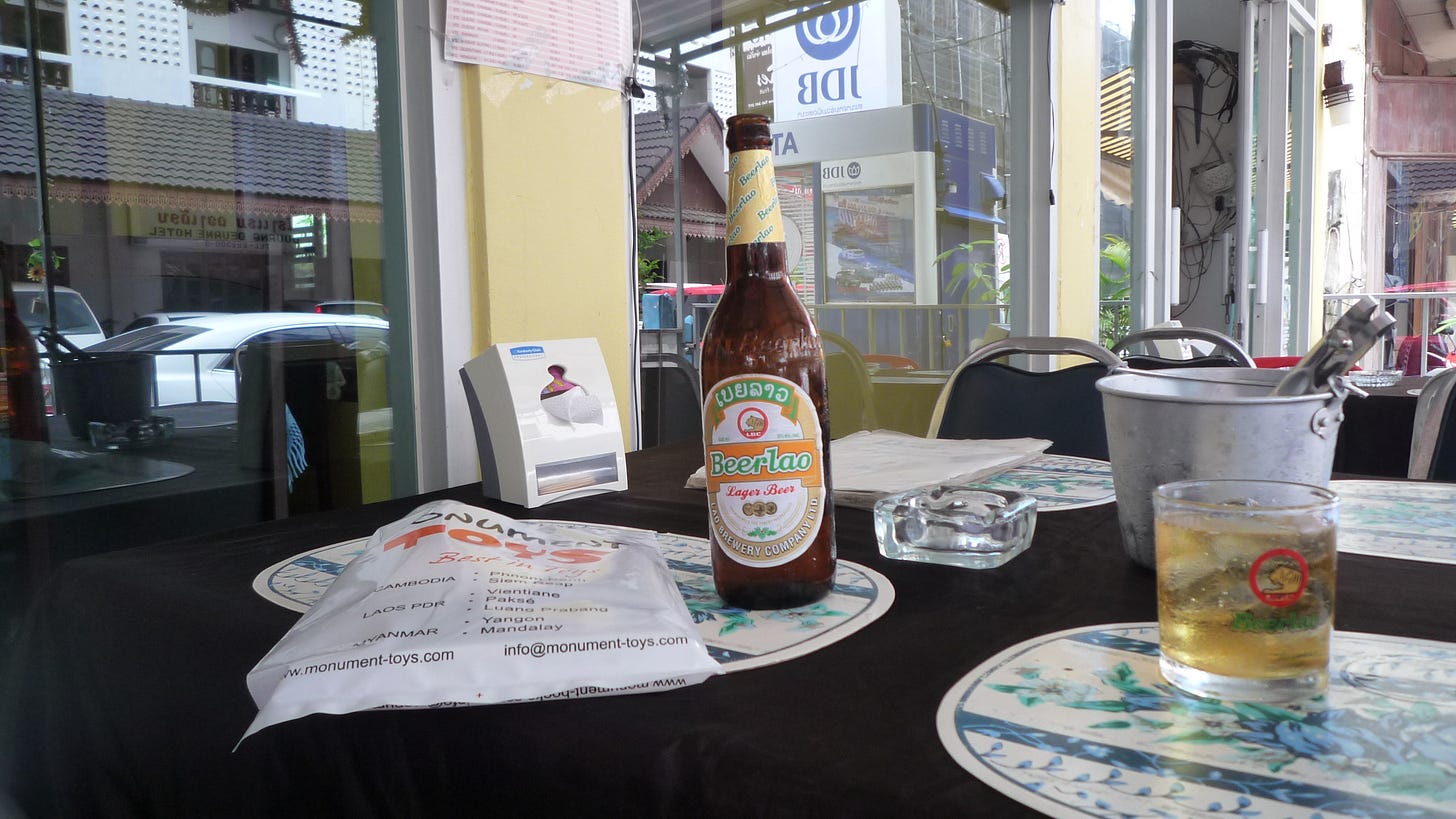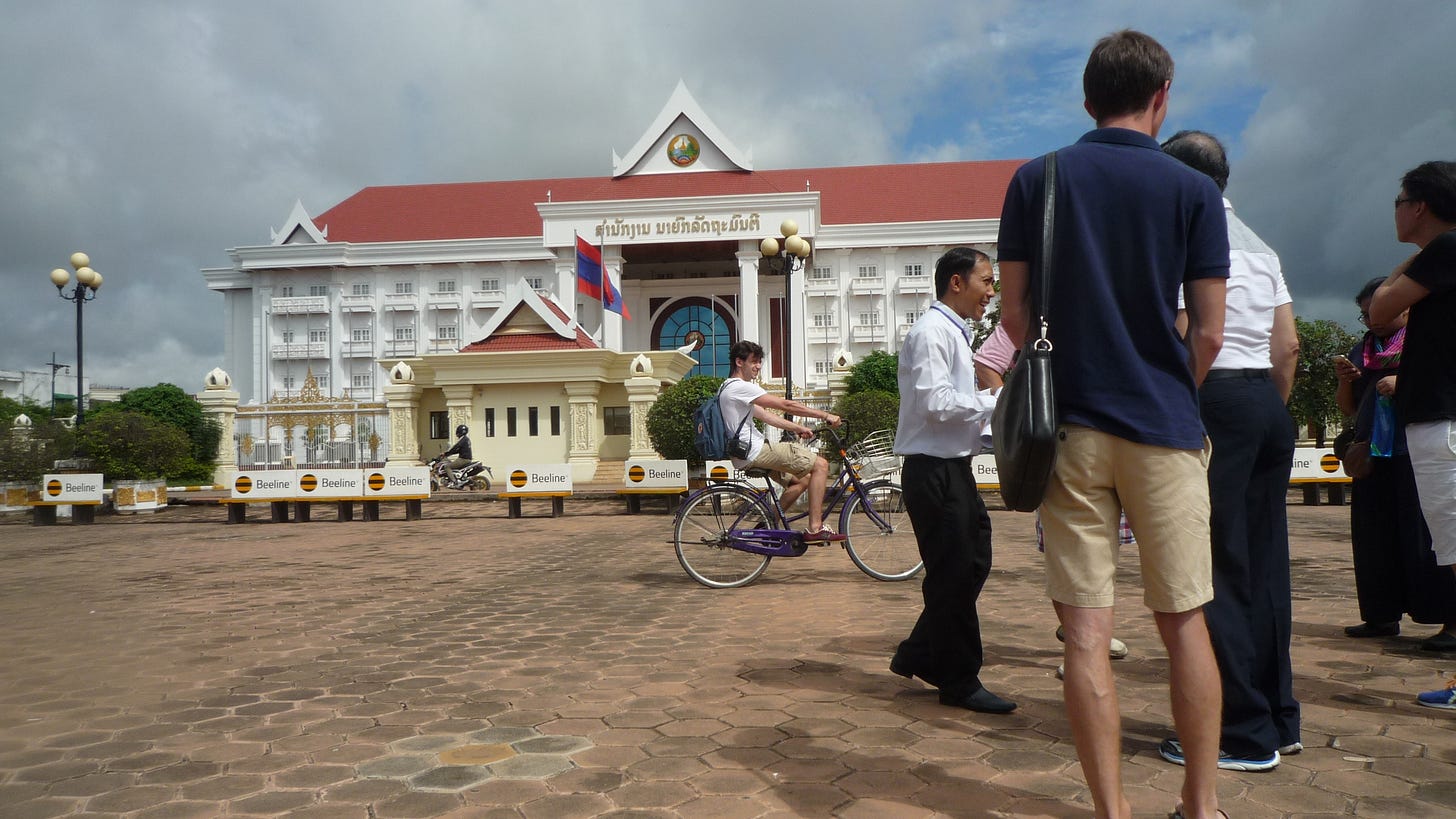Beer and loafing in Laos
In which our protagonist travels abroad and enjoys cold beverages, sometimes for free
(This piece was written in 2016, when I was given the chance to attend a roundtable meeting in Laos that discussed, among others, issues surrounding the West Philippine Sea.)
Vientiane, the capital of Laos, had me worried.
No, it wasn’t the socialist government nor the state-controlled media.
It was the city’s leisurely pace: it was — and remains — so laid back that it threatens to make unrepentant slackers such as myself look good.
Which explains why I got fair warning from my friends.
“Don’t expect your food to arrive immediately,” they said, adding that Laotians like to take their time.
I didn’t believe it.
But I was proven wrong minutes upon my arrival in Laos on Aug. 7.
Together with a Manila-based journalist, we walked into a restaurant at 10:30 in the evening tired, hungry, and thirsty.
It had been a long day for both of us.
We had just gotten off a one-hour flight from Bangkok that was delayed for 30 minutes, unduly extending our three-hour layover in Thailand following a three-hour flight from Manila. Let me repeat that for purposes of exaggeration: A three-hour flight from Manila to Bangkok, a three-hour layover at the airport plus a 30-minute delay, and another one-hour flight to Vientiane. All of that excludes precious time wearing your ass off in traffic to and from the airport, not counting 30 minutes or so wasted at the luggage carousel, praying that your backpack didn’t end up in Botswana, Bhutan, or Busuanga.
Thankfully, nothing of that sort took place.
Except that the whole trip from Manila to Vientiane was practically the length of a flight to the US. Or at least that’s what my companion said as he sat down, grumbled, and scanned the restaurant menu.
I nodded absently, refusing to think about all the lost hours that could have been spent productively — reading, sleeping, drinking, or barring anything else, working.
While deciding on what to order for supper, I knew instinctively what I wanted to drink — a tall bottle of Beerlao, the country’s (and soon-to-be my own) pride and joy.
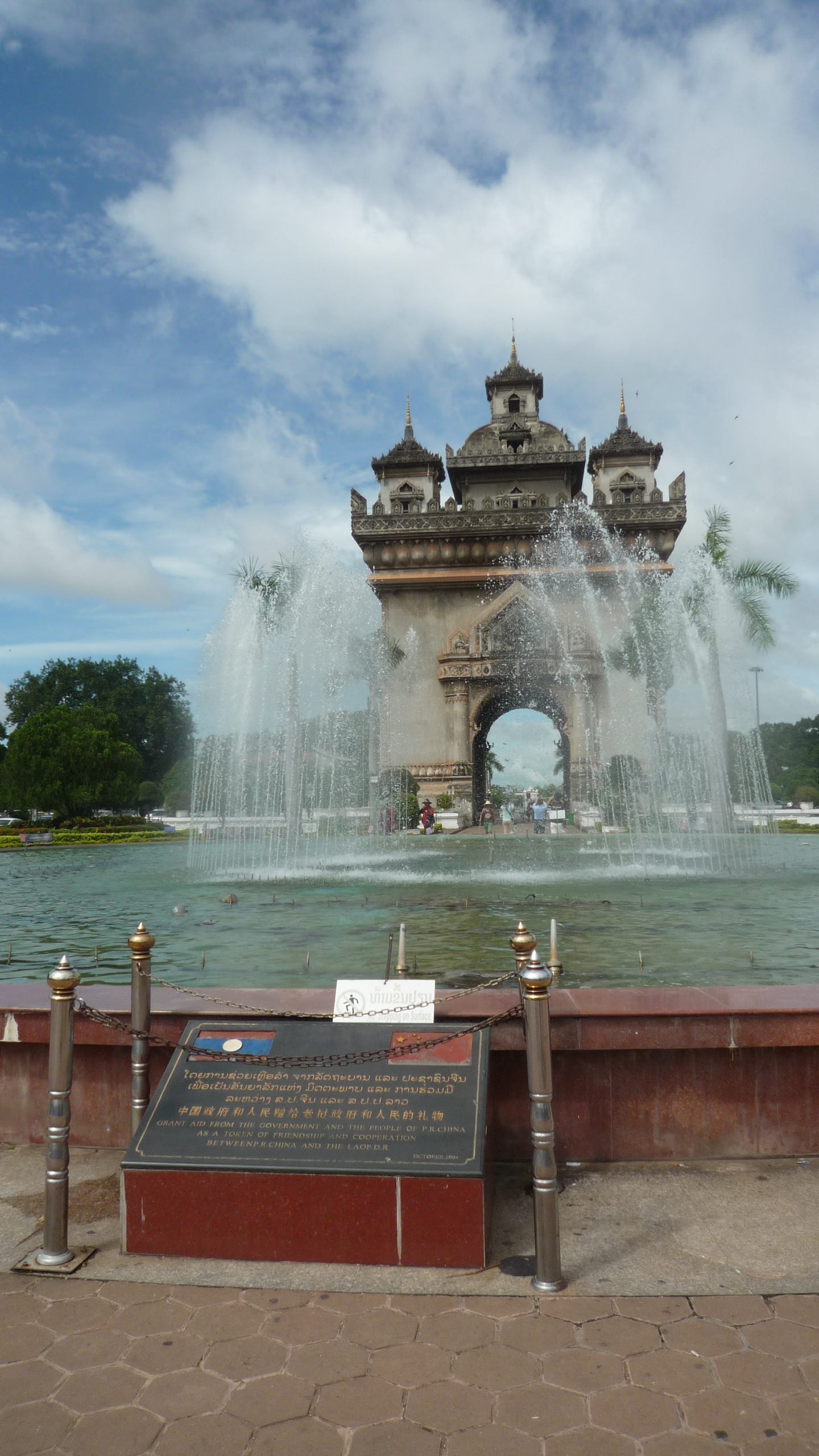
Suffice it to say that our drinks took longer than any one of President Rodrigo Duterte’s speeches.
The drinks were served shortly after our food arrived and only because I followed it up twice with the waiter and three times with the waitress, who noticed my parched throat, my dry lips, and my prolonged sobriety.
Having said that, the meal was worth the wait.
The beer was ice-cold and the food was great.
To top it all off, our dinner — three continental dishes and several rounds of drinks — set us back somewhere between $12 to $15 or roughly P750 tops.
In short, the whole thing was a steal, considering that the restaurant was located in a place that looked like a slightly younger and cleaner version of Manila’s Remedios Circle, complete with a well-lit water fountain at the center.
Too bad the place closed at 11:30 p.m., about the same time the city called it a night.
But not everyone was ready to go to bed.
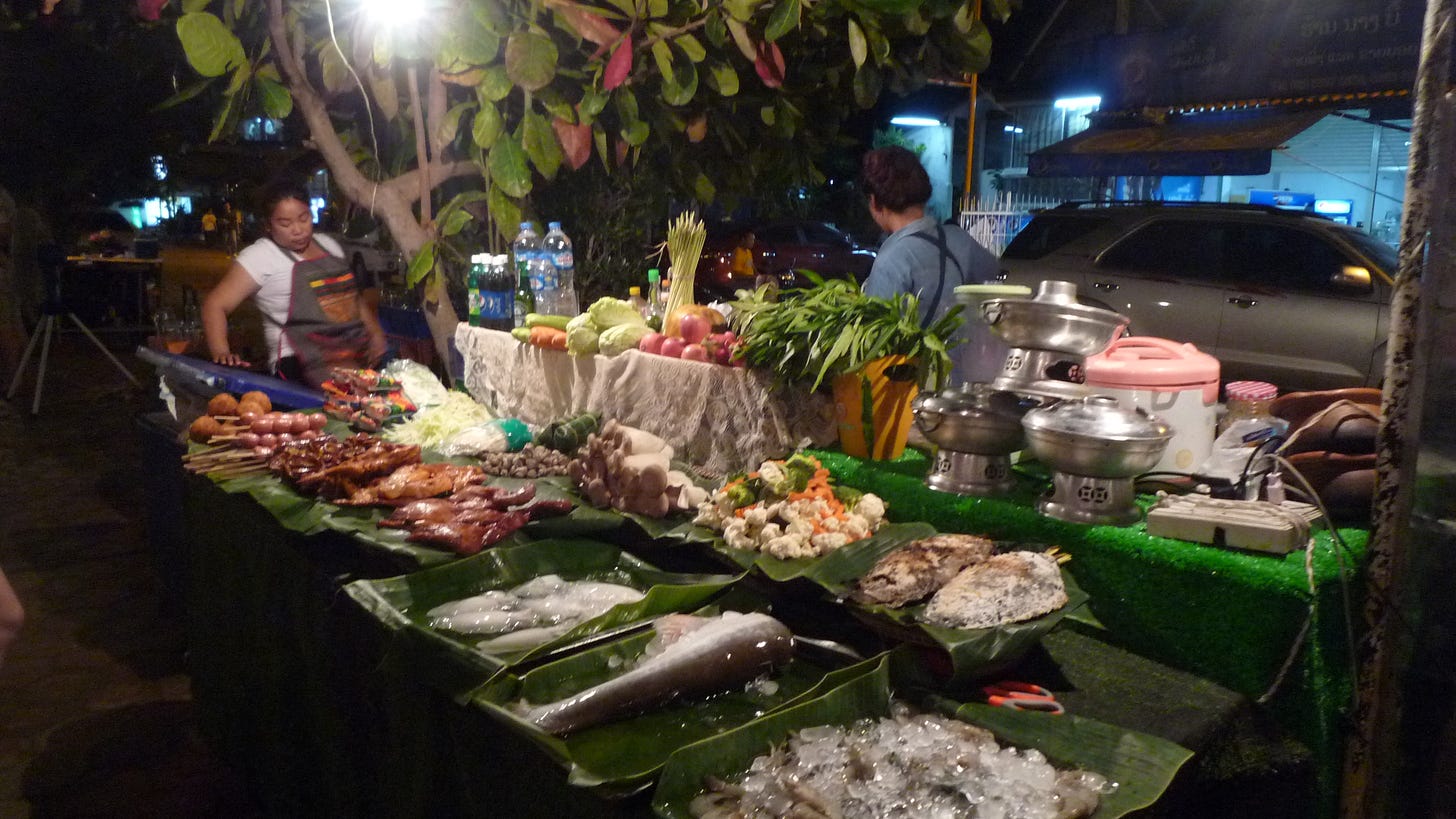
As we walked back to the hotel, we were met by two young women — one in shorts and the other in a tight, skimpy dress — onboard a motorcycle.
They went straight to the point and asked us whether we wanted a massage.
We politely declined the offer.
After all, we had other plans.
My companion declared that he already wanted to turn in.
As for myself, I was preparing to attack my room’s mini-bar at the Lao Plaza Hotel, the first — and so far, the only — five-star hotel in the country.
The raid was successful. It yielded two cans of Beerlao Lager and Beerlao Gold. (Hic.)
No need for speed
Every single day is like a Sunday in Vientiane.
Even if it has two rush hours in a day — 7:30 in the morning and 12:30 in the afternoon — everything proceeds as if nearly in slow motion, just like the narrative action of a happy European movie.
Vehicles are known to cruise at a top speed of 50 or even 40 kilometers an hour, even on empty highways, a concept unfathomable to tricycle drivers plying the crowded streets in my neighborhood.
So far, none of the Laotians have expressed the need for more speed. If they have, at least they don’t show it.
After all, Laotians have been culturally discouraged from hitting their car horns at the slightest inconvenience since it is considered rude. This sense of propriety on four wheels have, more or less, preserved or encouraged their culture on two.
To this day, many residents use their bicycles to commute around the city and carry their goods.
Since cycling comes as a second nature to most Laotians, establishments have put up bike rental shops with road bikes (thinner tires and baskets in front) going for 10,000 kip (P57 a day) while it is about double or more for mountain bikes.
It comes as no surprise that tourists — especially Caucasians — have warmed up to the idea of going around Vientiane on two wheels.
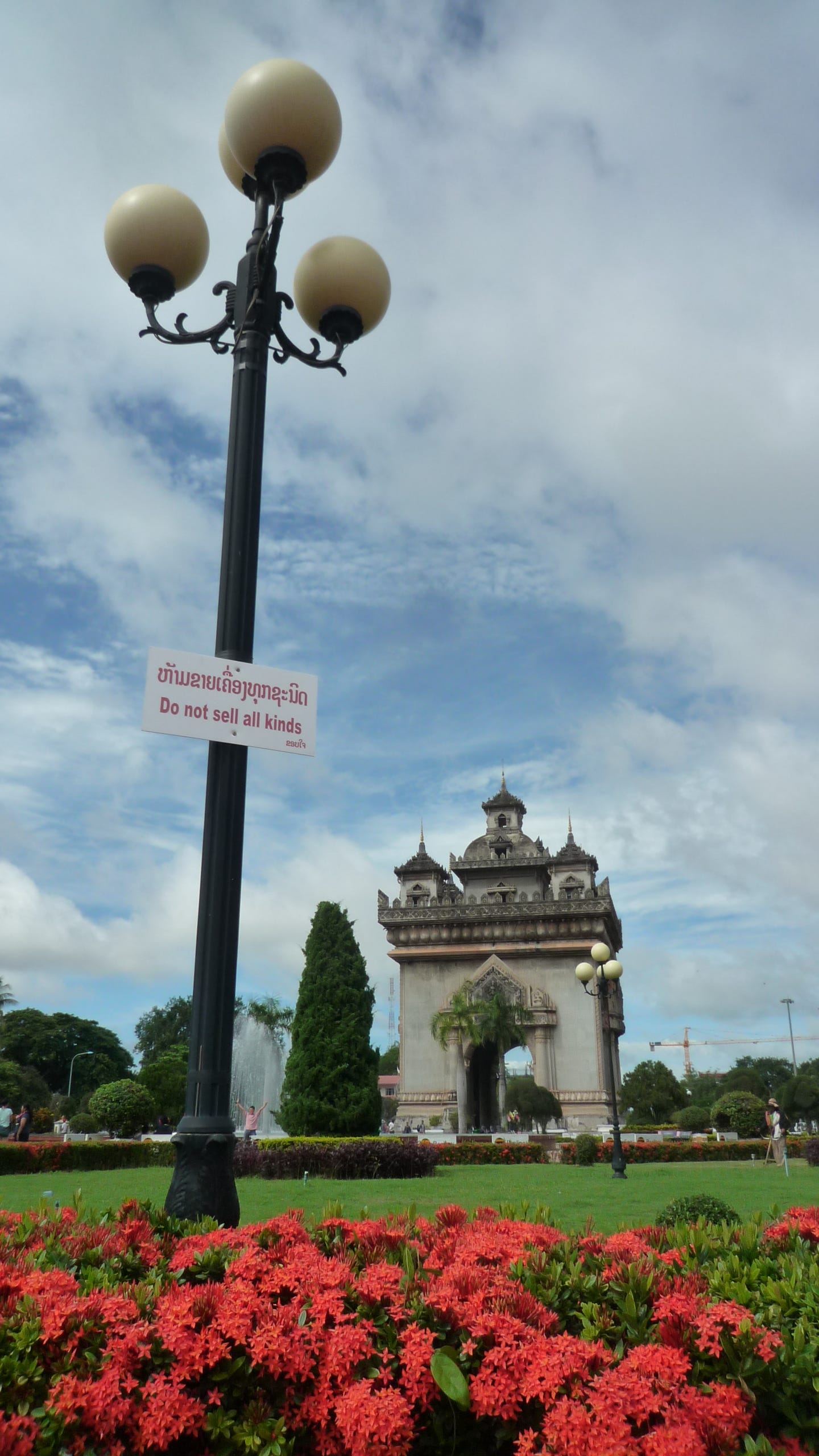
During my short stay, I’d seen at least two white couples joining the locals as they rode their bikes across the city, something I’ve never witnessed in Metro Manila in such short a time ever since I started to commute by bike in 2013.
Although Vientiane — like most of Metro Manila — still lacks facilities to promote cycling, riding on two wheels seems to be a hard habit to break. As a result, both cyclists and drivers continue to respect one another on the road, conceivably allowing anyone to visit the city’s temples, museums, parks, and open air restaurants along the Mekong River, all on a bike.
Unfortunately, I wasn’t one of them.
I was in Vientiane on business (supposedly), being one of two Filipino participants in the 5th Editors’ Roundtable sponsored by the Jakarta-based Economic Research Institute for ASEAN and East Asia (ERIA). The conference dealt with “New Challenges to the ASEAN Community 2025.”
Not enough ASEAN news in Manila
In one of the coffee breaks during the conference, a senior Asian journalist chided Philippine media — which I represented, allegedly — for “not writing enough stories about ASEAN and ASEAN integration.”
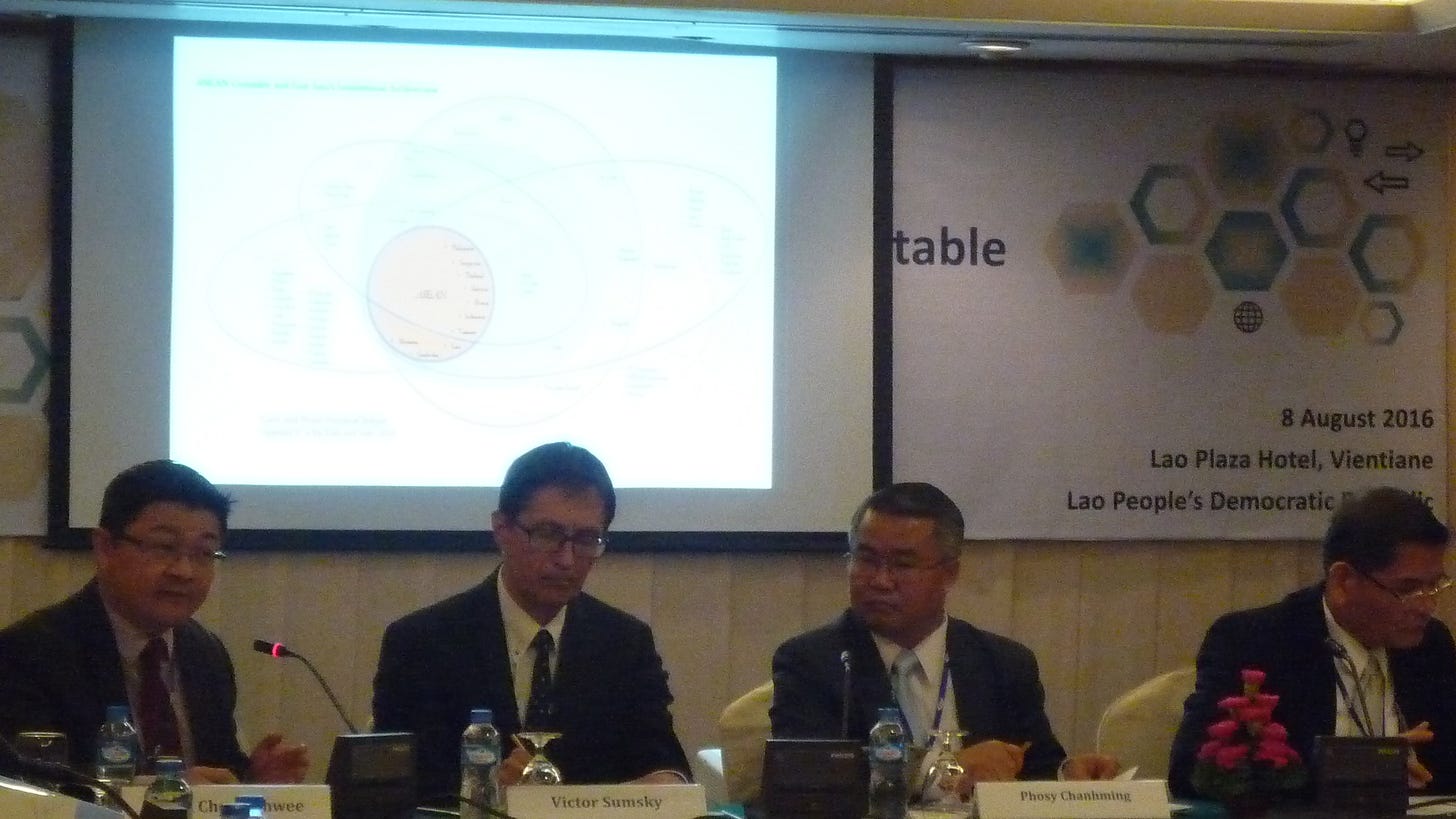
While he had a point — the Philippines, after all, will be hosting the ASEAN Summit for 2017 — I was not inclined to defend myself (nor the Philippine media, for that matter) because, one, he was older; two, he was smarter; and three, he was bigger and could break my neck faster than a New York minute.
But then again, I wasn’t entirely to blame, despite my countless journalistic fumbles.
Several Asian speakers themselves disagreed on certain issues hounding the ASEAN.
It wasn’t just the language barrier.
It was also the forms of government, the respective roles the media play in these countries, and — most importantly — the concept of the ASEAN region itself, the validity of which was disputed by several other speakers and journalists.
Inevitably, the territorial row between Manila and Beijing was brought up by Dr. Kuik Cheng-Chwee, an associate professor at the National University of Malaysia in his presentation.
But it took Dr. Ponciano S. Intal, Jr., ERIA’s senior economist, to further clarify, and refine the points Dr. Cheng-Chwee discussed.
ASEAN member-economies including the Philippines should continue to put an emphasis on an accord covering politics and security cooperation to “peacefully utilize resources in the South China Sea,” he said.
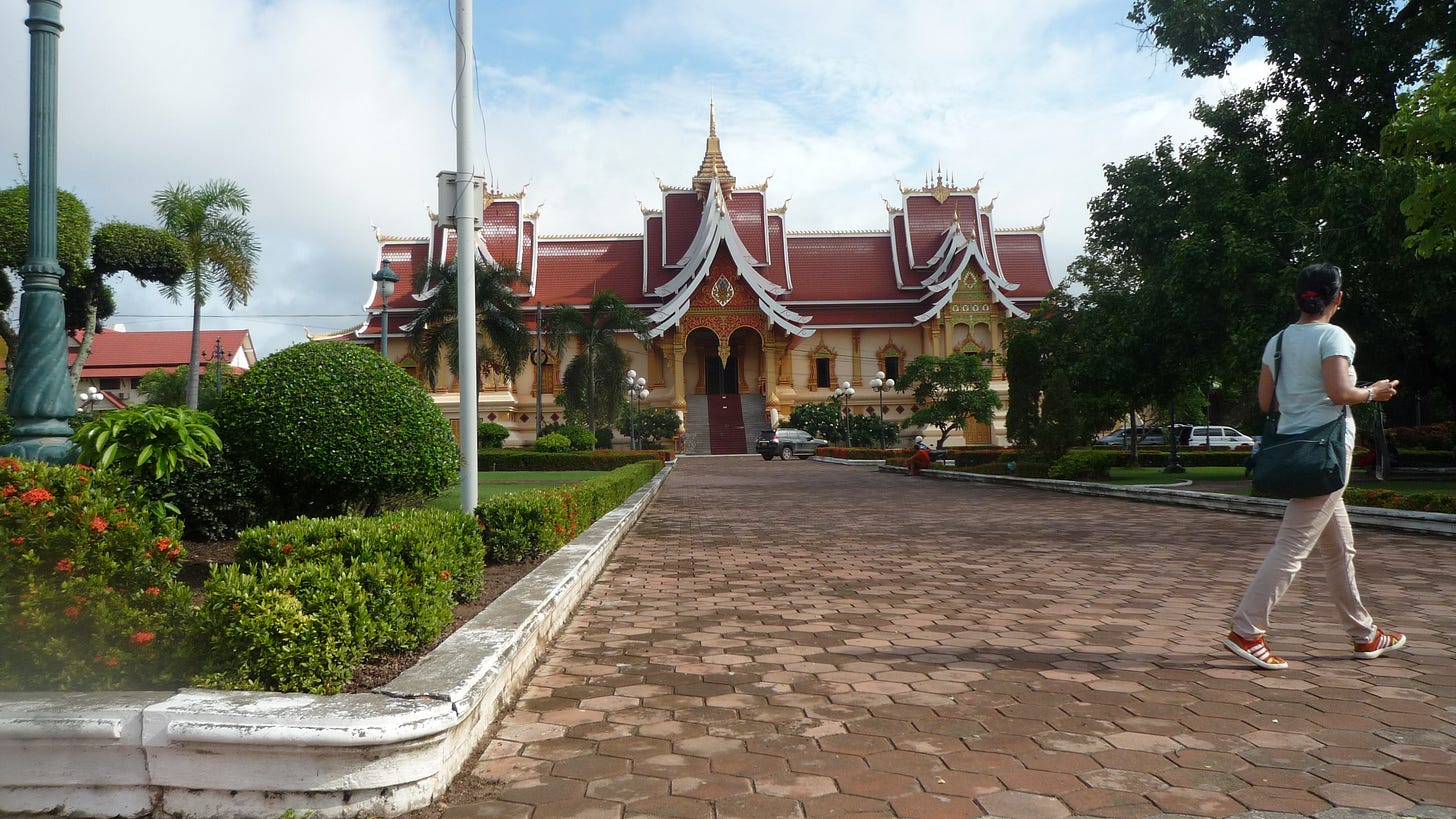
“Having a code of conduct would be a good way to thumb down the tensions,” Mr. Intal said during the roundtable meeting. “[It] can take a lot of time, patience, and discretion.” Mr. Intal referred to the Declaration on the Conducts of Parties in the South China Sea (DoC), which intends to promote “a peaceful, friendly, and harmonious environment” in the area that’s being claimed by the Philippines, China, Malaysia, and Brunei. The DoC was signed in November 2002 by China and the ASEAN. Its “full and effective implementation” was reaffirmed by the same parties in November 2015.
“Over time, you don’t want the South China Sea as a significant hindrance to deeper integration and linkages between ASEAN and China,” added Mr. Intal, also a former professor at De La Salle University, after delivering his presentation. “You have to accommodate various interests of ASEAN member states.”
As the two experts wrapped up their presentations, I sent an advisory to the BusinessWorld desk in Manila, informing editors to expect a story about the issue in an hour or so. It was just about the best way to prove that I can earn my keep, deserve the foreign trips I get (at least on certain occasions), and help relieve the so-called dearth of ASEAN news stories in the Philippines.
Leaving Laos
Leaving Vientiane proved to be more complicated than finding out exactly how the city’s name is pronounced. Is it Viengchan, as indicated in the fiction of Outhrine Bounyavong, one of Laos’ most famous writers? Is it supposed to rhyme with mention, attention, revolution? Or should it simply be pronounced as spelled?
I’ve heard it pronounced several ways but I wasn’t exactly sure.
But on Tuesday — the last of my two-day stay in the Laotian capital — I wasn’t exactly in the mood to find out.
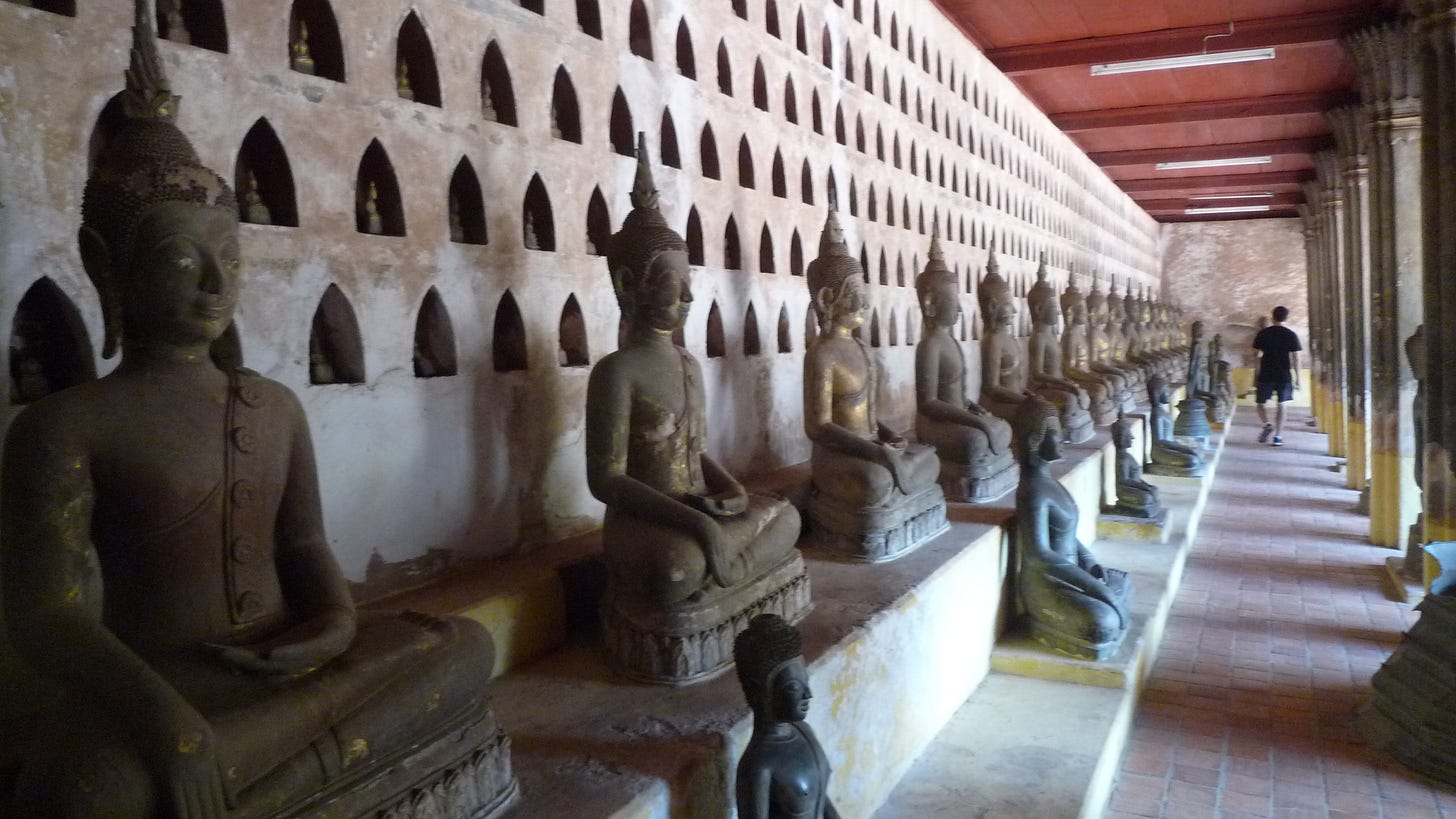
A security officer at the Wattay International Airport refused to let me into immigration, raising two possibilities, none of them good: Either I would miss my flight home or I would be disallowed from leaving the Lao People’s Democratic Republic altogether.
“No,” the officer said, when I showed him my passport and boarding pass for the connecting flight to Bangkok.
Despite my earnest supplications — one of my better skills — the officer refused to budge, just like a certain president we only know too well.
When I gently pressed him on one more time, the guard stood up, gesticulated with his hands and arms, just like a winning contestant in a Filipino noontime show. “No,” he said again.
I was aghast.
Was there a hold departure order against me that I wasn’t aware of? If so, what did I do to get on the Laotian government’s nerves? Did I forget to pay for room service? Fail to leave a tip? Accidentally make fun of — sorry, socialists — socialism?
Fortunately, it was none of the above.
It was simply the laid-back Laotian culture in action.
I was refused entry into passport control because it wasn’t time to board yet. There was no reason for the rush. In other words, in true Laotian fashion, I should have taken it easy, savored the present moment, and enjoyed the flight home.



